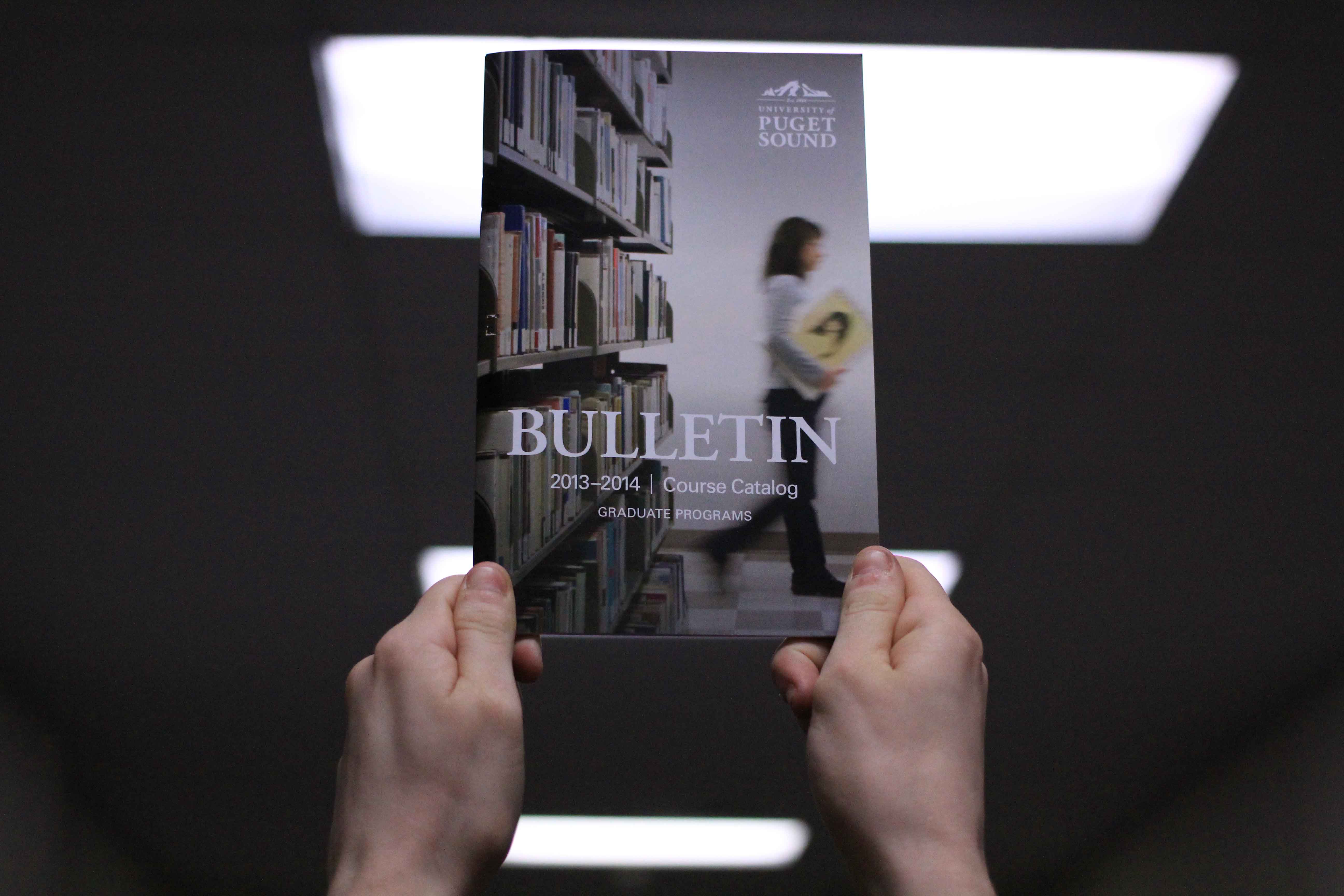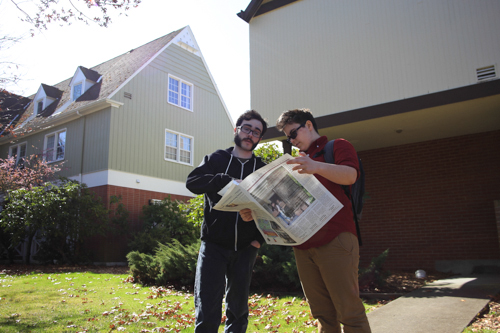
Registration for students this year has been more difficult given that the handbook listing every class the University has to offer, officially called the Bulletin, seems to have disappeared from campus. The Bulletin, which includes information on core classes, major and minor requirements and the various departments at the university, is useful for picking the right courses at the right time. The Registrar’s Office is experiencing an influx of hard copy Bulletin requests and is in the process of ordering more.
“My roommate chose this school because of a class she saw in the Bulletin,” sophomore Rachel Murphy said.
In general, students receive the Bulletin shortly after being accepted to the University in order to look at the classes that most interest them.
This year, however, incoming freshmen did not receive the Bulletin at all; rather, their admission decision came with a thin packet, which listed a few classes and then explained that the rest were online and where to find them.
The change from the printed Bulletin to the online Bulletin, according to the Associate Academic Dean Martin Jackson “was to save costs in printing and distributing paper copies of the Bulletin. In past years, the Office of Admission sent a paper copy of the Bulletin to each prospective student.
“This required printing and mailing thousands of copies.
“All of the content in the Bulletin is available on the University web page in multiple places such as department web pages, a PDF file of the printed version, and a “book” version of the PDF file,” Jackson said.
The bulk of class descriptions are now on the University’s new student center, the PeopleSoft website, which has been receiving mixed reviews from students and staff alike.
Some are dissatisfied with PeopleSoft and miss the paper copy of the Bulletin, as many members of the freshman class were surprised to not have received a copy.
According to Jackson, “it’s a coincidence that this change has happened during the transition to PeopleSoft.”
“When I got it [the Bulletin], I definitely utilized it when I was picking classes. I used it [to pick] my seminar class,” sophomore Nihal Mustakim said. “I think it is really helpful for incoming freshmen. It definitely helped me.”
“Having a hard copy is nice. There was lots of problems with the online version,” freshman Marites Exume said.
Other students welcome the disappearance of the Bulletin and the switch to an online course catalogue, citing PeopleSoft’s easier-to-use technology and its more eco-friendly nature.
“The book was so big it was overwhelming,” sophomore Kai Hundemer said.
“I don’t use [the Bulletin]. I go online,” sophomore Megan Campbell said. “It’s easier to compare classes by opening two tabs.”
Some find the online version easier to navigate than the physical copy of the Bulletin.
“I found [registration] easier online. It was easier to look up classes,” freshman Kelvin Chao said.
The Bulletin, unlike the paperless class descriptions online, is over 300 pages long; printing a copy for each individual on campus uses thousands of pages that can too easily get lost or damaged.
“I find myself accessing Bulletin content both online (primarily through department web pages) and in a paper copy. It would be good for us to get a better understanding of how many students prefer a paper copy so that we can adjust for next year if we’ve underestimated the demand,” Jackson said.
Whichever way students prefer to pick their classes, the University’s drive for sustainability means that fewer and fewer copies of the Bulletin will be printed.
PeopleSoft is taking over the registration process despite numerous complaints that it is confusing to use.
For upperclassmen, the change is a minor inconvenience; for freshmen, however, PeopleSoft is another challenge to master in the process of getting acclimated to their new college environment.
“I think I would have been confused either way as an incoming freshman,” freshman Madeline Craiglow said.




